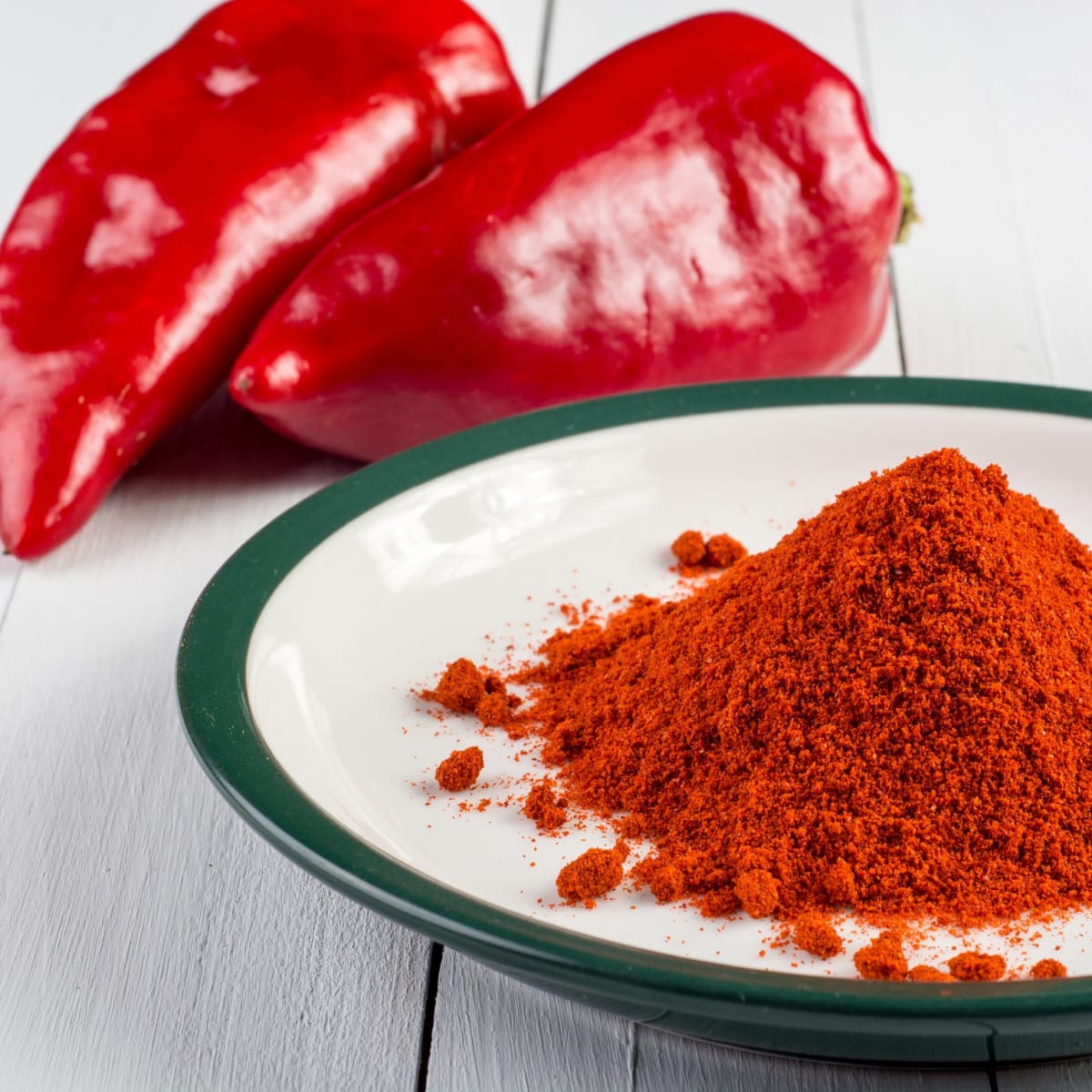Paprika is a bold and flavorful spice, celebrated for its vibrant red color and its ability to enhance the taste of dishes from around the globe. From sprinkling it on deviled eggs to stirring it into a hearty stew, paprika is a go-to ingredient in many kitchens. But what exactly is paprika made of? Let’s explore its origins, the process behind its creation, and the different varieties of this versatile spice.

The Origins of Paprika
Paprika is made from one primary ingredient: dried and ground red peppers. These peppers belong to the Capsicum annuum family, which includes varieties like bell peppers and chili peppers. The type of pepper used can vary depending on the region and desired flavor profile, resulting in a spice that ranges from sweet and mild to bold and spicy. The origin of the peppers plays a crucial role in determining the taste and quality of paprika.
How Paprika Is Made
Creating paprika involves a straightforward yet precise process that ensures the spice delivers its characteristic flavor and color. Here are the key steps:
- Harvesting: Peppers are picked at their peak ripeness to achieve the richest flavor and the brightest red hue. Timing is essential, as overripe or underripe peppers can alter the spice’s quality.
- Drying: Once harvested, the peppers are dried to remove moisture. This can be done through air drying, sun drying, or specialized dehydrators. Drying intensifies the peppers’ flavor and ensures a longer shelf life.
- Grinding: After drying, the peppers are ground into a fine powder. The grind’s texture can vary depending on the desired smoothness, creating the signature look and feel of paprika.
- Processing Variations: Some paprika varieties undergo additional steps, such as smoking the peppers during drying to infuse a smoky flavor. Others may be blended with salt or additional spices to create seasoning mixes.
Different Types of Paprika
Not all paprika is the same. Its flavor can range from sweet and mild to hot and smoky, depending on the type of peppers and processing methods used. Here are the main varieties:
- Sweet Paprika: Known for its mild flavor and bright color, sweet paprika adds subtle sweetness without heat. It’s ideal for enhancing the visual appeal and taste of dishes like deviled eggs or potato salad.
- Hot Paprika: Made from spicier pepper varieties, hot paprika delivers a fiery kick. It’s perfect for those who enjoy a touch of heat in their meals.
- Smoked Paprika (Pimentón): This Spanish specialty involves smoking peppers before drying, giving the spice a deep, smoky flavor. It’s commonly used in Spanish dishes and pairs well with meats, stews, and roasted vegetables.
- Hungarian Paprika: Often regarded as the pinnacle of paprika, Hungarian varieties range from sweet to spicy. Hungarian paprika is a cornerstone of dishes like goulash, prized for its rich, complex flavor.
Paprika’s Role in the Kitchen
Paprika’s versatility makes it a staple in countless recipes. Its vibrant color is perfect for garnishing dishes like hummus or soups, while its flavor enhances everything from sauces to roasted vegetables. Whether used as a rub for meats, a seasoning for snacks, or an ingredient in stews, paprika adapts to various cuisines. Its ability to add depth—whether sweet, spicy, or smoky—makes it an indispensable spice in kitchens worldwide.
A Global History
Paprika’s story began in the Americas, where indigenous people first cultivated red peppers. European explorers brought the peppers back to Europe, where paprika became particularly popular in Spain and Hungary. These countries integrated paprika into their cuisines, creating the iconic flavors associated with Spanish and Hungarian dishes. Today, paprika is cherished worldwide, celebrated for its rich history and bold taste.
Conclusion
At its core, paprika is made from dried and ground red peppers, offering a variety of flavors that cater to diverse palates. Its journey from the Americas to becoming a global kitchen staple is a testament to its universal appeal. Whether you’re looking to add a burst of color, a hint of sweetness, or a touch of spice, paprika is a versatile ingredient that can elevate any dish.